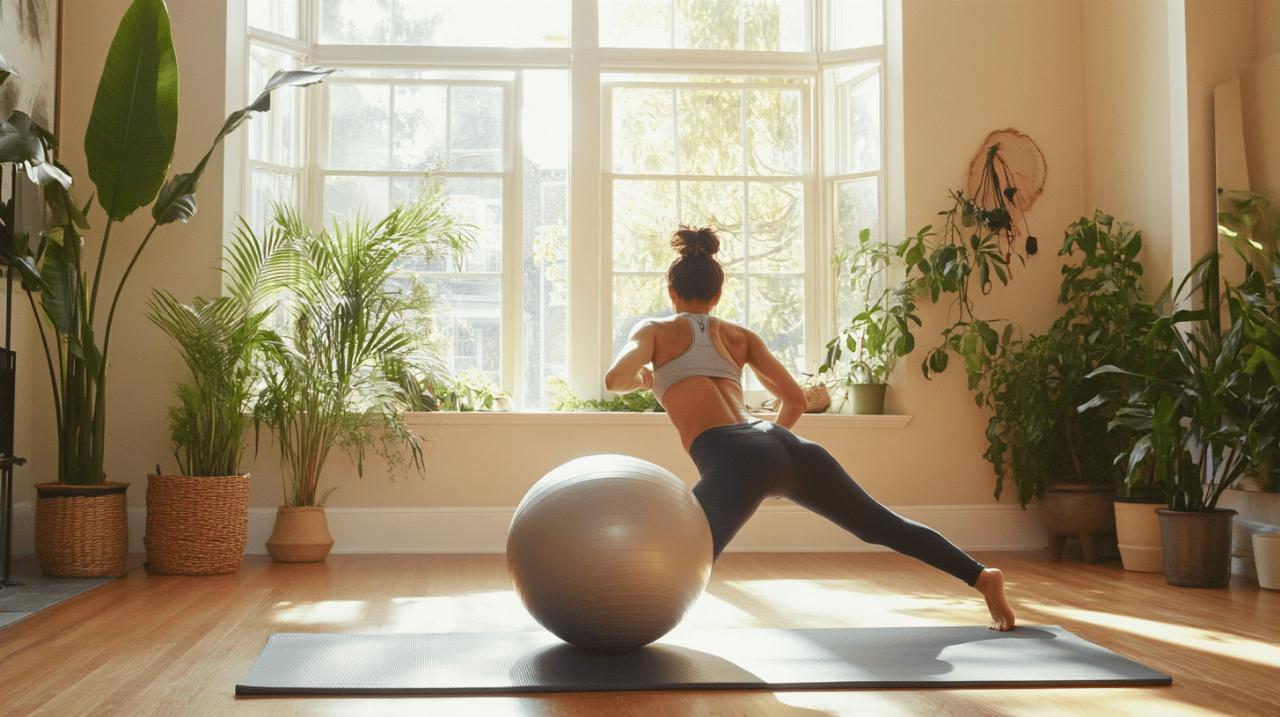Understanding your pelvic floor and its importance
The pelvic floor is a group of muscles that forms a supportive hammock at the base of your pelvis. These crucial muscles support your bladder, bowel, and reproductive organs, playing a vital role in maintaining proper function and control. When these muscles are strong, they help prevent embarrassing leaks and provide essential support to your internal organs. However, many people experience weakening of these muscles due to various factors, leading to bladder control issues that can significantly impact quality of life.
The Role of Pelvic Muscles in Bladder Control
Your pelvic floor muscles act like a natural corset, controlling the release of urine, faeces, and flatus. When functioning properly, these muscles contract to keep openings closed when you need to hold on and relax when it's time to release. Kegel exercises specifically target these muscles, helping to strengthen and tone them for better urinary control. Strong pelvic muscles allow you to maintain continence even during activities that increase abdominal pressure, such as coughing, sneezing, or laughing, preventing those unexpected leakage moments that can be so distressing.
Common causes of pelvic floor weakness
Several factors can contribute to the weakening of your pelvic floor muscles. Pregnancy and childbirth are primary causes, as the weight of the baby during pregnancy and the stretching during delivery can significantly strain these muscles. This weakening occurs even with caesarean deliveries. Aging naturally affects muscle tone throughout the body, including the pelvic floor. Other contributors include obesity, which places extra pressure on these muscles, certain surgeries in the pelvic region, chronic constipation that causes repeated straining, persistent coughing, and high-impact exercises that jar the pelvic floor. Understanding these causes can help you take preventative steps before bladder weakness becomes problematic.
Effective ball exercises for strengthening your pelvic floor
Using a ball for pelvic floor exercises adds resistance and feedback, making your training more effective and engaging. These exercises help you isolate and properly engage the correct muscles while providing stability support. The right ball exercises can transform your pelvic health routine, offering a practical approach to strengthening these often-neglected muscles. Let's explore some fundamental techniques that can help you regain bladder control and improve overall pelvic support.
Seated ball squeezes and proper technique
Begin by sitting comfortably on a chair with your feet flat on the ground, knees hip-width apart, and maintain proper posture with a straight back. Place a small exercise ball between your knees. Gently squeeze the ball while simultaneously engaging your pelvic floor muscles – imagine you're trying to stop the flow of urine or prevent passing gas. Hold this contraction for three seconds while breathing normally, then release for three seconds. Focus on isolating your pelvic muscles rather than tensing your buttocks or inner thighs. As your strength improves, gradually increase the holding time to five seconds and eventually ten. This exercise provides excellent feedback, helping you ensure you're activating the right muscles while strengthening both your inner thighs and pelvic floor simultaneously.
Bridge exercises with ball support
Lie on your back with knees bent and feet flat on the floor, hip-width apart. Place a stability ball between your knees. Press your lower back into the floor and engage your core muscles. Squeeze the ball gently between your knees as you lift your hips off the floor, creating a straight line from your knees to your shoulders. While in this bridge position, perform a pelvic floor contraction, holding for three seconds while maintaining the bridge. Slowly lower your hips back down while keeping the ball in place. The ball provides resistance that helps activate your inner thighs, which connect with your pelvic floor muscles. This multifunctional exercise strengthens your glutes, hamstrings, and core while targeting the pelvic floor, creating a comprehensive lower body workout that supports bladder control.
Advanced ball techniques for pelvic floor rehabilitation
 Once you've mastered the basic exercises, progressing to more advanced techniques can further enhance your pelvic floor strength and function. These exercises incorporate more dynamic movements and increased resistance, challenging your muscles in new ways. They're particularly beneficial for those who have developed a basic level of pelvic floor awareness and control but want to achieve more significant improvements in bladder support and overall pelvic health. Always ensure you can perform these exercises without pain or increased symptoms.
Once you've mastered the basic exercises, progressing to more advanced techniques can further enhance your pelvic floor strength and function. These exercises incorporate more dynamic movements and increased resistance, challenging your muscles in new ways. They're particularly beneficial for those who have developed a basic level of pelvic floor awareness and control but want to achieve more significant improvements in bladder support and overall pelvic health. Always ensure you can perform these exercises without pain or increased symptoms.
Wall squats with ball positioning
Position yourself with your back against a wall and place a stability ball between your lower back and the wall. Step your feet forward slightly, about hip-width apart, ensuring your knees are aligned with your ankles. Slowly bend your knees to lower into a squat position, sliding down the ball, while simultaneously engaging your pelvic floor muscles. Aim to lower until your thighs are parallel to the ground or as far as is comfortable. Hold this position for three to five seconds, maintaining the pelvic floor contraction, then slowly return to standing. The ball provides back support and stability while ensuring proper alignment during the exercise. This movement not only strengthens your pelvic floor but also works your thighs and glutes, creating comprehensive lower body strength that supports proper pelvic positioning.
Core engagement exercises using a stability ball
Sit on a stability ball with your feet flat on the floor, hip-width apart. Find your balance point where you feel secure on the ball. Engage your core muscles by drawing your navel toward your spine. While maintaining this core engagement, perform small bounces on the ball while simultaneously contracting your pelvic floor muscles. You can also try marching in place while seated on the ball, lifting one foot slightly off the ground at a time while maintaining pelvic floor engagement. These dynamic movements on an unstable surface challenge your pelvic floor to respond to changes in pressure and position, mimicking real-life situations where bladder control is tested. The stability ball exercises enhance coordination between your core and pelvic floor, which is essential for proper bladder support during daily activities.
Creating your pelvic floor exercise routine
Developing a consistent and effective pelvic floor routine is key to seeing results. Random, occasional exercises won't produce the improvements in bladder control you're seeking. Instead, a structured approach with progressive challenges will help strengthen these muscles systematically. Your routine should incorporate a mix of the exercises discussed earlier, adapted to your current strength level and gradually increased as you improve. Remember that pelvic floor training is similar to other forms of exercise – consistency and proper technique are more important than intensity.
Recommended Frequency and Duration for Results
For optimal results, aim to perform pelvic floor exercises daily, ideally breaking them into multiple short sessions throughout the day. Begin with three sets of 10 repetitions of your chosen exercises, holding each contraction for three seconds. As your muscles strengthen, gradually increase the holding time to 10 seconds and the number of repetitions to 15 per set. Most experts recommend doing these exercises at least morning and night, though three sessions daily can accelerate progress. Be patient, as improvements typically take six to eight weeks of consistent practice to become noticeable. The NHS suggests a combination of quick contractions and longer holds to build both strength and endurance in these muscles. Track your progress to stay motivated, noting improvements in bladder control or reduced leakage incidents over time.
When to consult healthcare professionals
While ball exercises for pelvic floor strengthening are generally safe, there are situations where professional guidance becomes necessary. If you're experiencing significant urinary or faecal incontinence, pelvic pain, or difficulty locating the correct muscles, consult your GP or a pelvic health physiotherapist. These specialists can assess your specific condition and provide tailored exercises. This is especially important if you've recently given birth, had pelvic surgery, or if your symptoms aren't improving despite consistent exercise. Healthcare professionals can employ techniques like biofeedback to help you identify and properly engage your pelvic floor muscles. They might also recommend complementary approaches such as vaginal cones or electrical stimulation for more severe cases. Women who are pregnant or recovering from childbirth should always consult their healthcare provider before starting any new exercise program.





